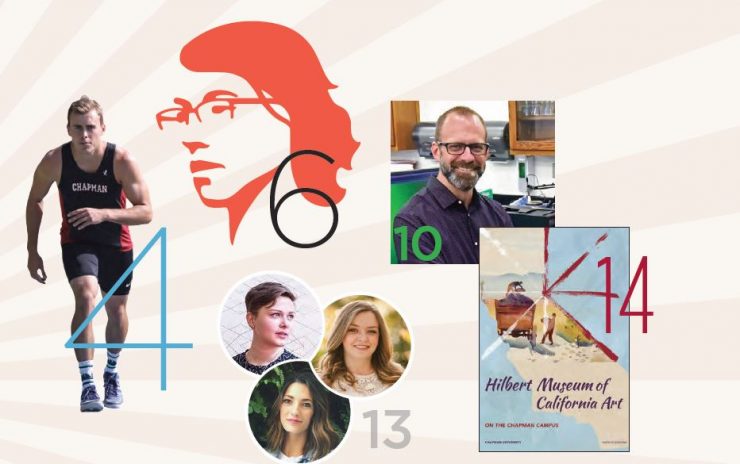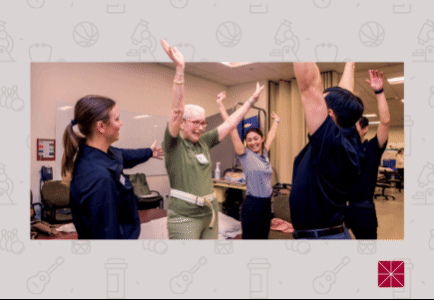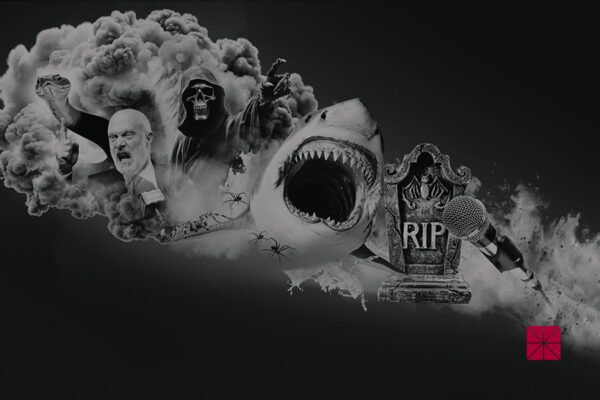From the colorful packaging on grocery store shelves to the dynamic imagery on movie posters and even the life-saving info on disaster-readiness materials, examples of dynamic graphic design are all around us. And so are practitioners of this thriving art form, including those in the Chapman Family.
So we at Chapman Magazine decided to invite several graduates of the University’s Graphic Design Program to showcase their talents for visual expression in this summer issue of Chapman Now.
The three graphic design alumnae who have contributed illustrations and designed spreads in this issue highlight the range of opportunities in the graphic design field these days. Deena Edwards ’14 designs user interfaces and generally upgrades the user experience for clients of New York-based WeWork, a booming enterprise that provides shared office space in more than 50 cities. Meanwhile, Diana Goldberg ’14 specializes in creative branding and packaging for the Bay Area firm Enlisted Design. And Alana Michaels ’16 works for Webydo in Tel Aviv, contributing creative insights for contractors to use the startup company’s software as they design websites.
The skill sets they built and the contacts they made at Chapman help them every day in the working world, the designers say.
“Understanding the general principles of design helps someone with a creative mind develop the best ways to communicate information,” says Edwards, who first connected her own creativity to graphic design in high school, where she performed in plays but also designed costumes, playbills and posters.
“The things I learned at Chapman definitely apply to all kinds of design.”
The program’s connection to critical skills and professional applications is by design, says Eric Chimenti, associate dean of the Wilkinson College of Arts, Humanities, and Social Sciences. Chimenti is also an associate professor of art who has taught graphic design at Chapman since 2000.
“We want our classes to be rigorous, and we want our students to integrate with the greater professional community,” Chimenti says. “That’s why our requirements include a 120-field-hour internship. And that’s why we have embedded in projects that students work across disciplines, with students in marketing, law, the performing arts. They’re prepared to present their work to clients and to meet real-world challenges.”
As it guides students to develop a robust portfolio of work, the program also explores the creative process, says Claudine Jaenichen, who chairs the Department of Art and is also a working graphic designer recognized in the industry as an expert in information design. These days she’s working with scientists, tech experts and policymakers to rethink how emergency-preparedness messages get communicated.
Likewise, Chapman’s curriculum provides “a mix of making and thinking,” Jaenichen says.
In addition to a portfolio of their finished work, students maintain a process folder, in which they catalog the ways they navigate challenges and develop solutions.
“I hated that,” Goldberg says of her process folder. “You had to talk about the objective, the aesthetics, the research – who the demographic is, why the design will reach this group – it’s a lot of work. But I have to admit that it really has helped in the long run. Even in job interviews, creative directors are looking for these things. And being able to take others’ critiques is really important.”
Without such outside appraisals, “sometimes you can stare at a project for days without seeing a way forward,” Michaels says. “I still email work to my best friend from the Graphic Design Program (Ariel Ximenes ’13), and she always gives me good feedback.”
As they apply their creative talents, our alumna designers help us tell a diverse set of Chapman stories. Michaels illuminates the recordbreaking long jump of Mitchell Bouldin ’17, whose feat culminated his college career and that of his mentor, Coach Anna Wlodarczyk. After that, Goldberg takes us inside the Chapman journey of Taylor Lee Patti ’17, who overcame her own doubts to become a scholar of quantum physics and win Chapman’s highest student honor. Then Edwards captures the energy and excitement of research led by Schmid College Dean Andrew Lyon that could bring breakthroughs for trauma and cancer patients.
We also get a chance to learn more about their choices in crafting these spreads before we then explore a Chapman graphic design class that each year produces the official University poster, providing an artful view of the Chapman experience. It all adds up to a journey of design discovery. So let’s get started.
Display photo at top/The table of contents for the summer 2017 issue of Chapman Now.





Add comment